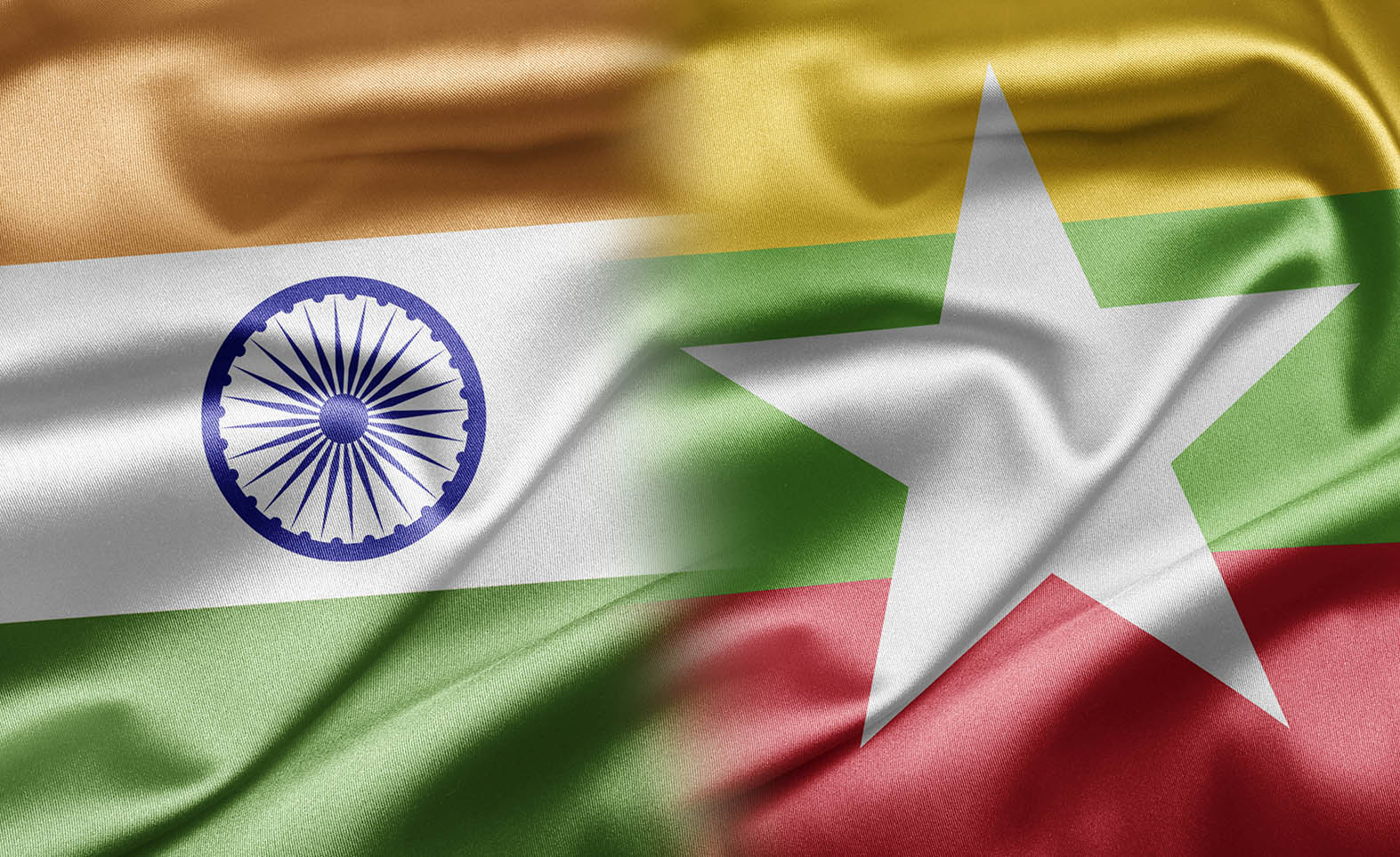India And Myanmar Strengthen Ties Through Shared Cuisine

Table of Contents
Historical Influences: Tracing Culinary Connections Between India and Myanmar
The rich tapestry of India and Myanmar culinary ties is deeply rooted in historical interactions. Centuries of trade, religious exchange, and colonial influences have left an indelible mark on the culinary landscapes of both nations.
-
Buddhist Monastic Traditions and Food Sharing: The spread of Buddhism across Southeast Asia facilitated significant cultural exchange, including culinary practices. Monasteries often served as centers for knowledge and the preparation of specific foods, leading to the sharing of recipes and ingredients across borders.
-
Trade Routes: Ancient and medieval trade routes connecting India and Myanmar acted as conduits for the exchange of goods, including spices, grains, and culinary techniques. The flow of these ingredients significantly shaped the development of both cuisines.
-
Colonial Influences: The British colonial period, while having its negative aspects, also inadvertently contributed to culinary cross-pollination. The introduction of new ingredients and cooking styles from other parts of the British Empire influenced both Indian and Myanmar cuisines in various ways.
Specific examples of this culinary fusion abound. Variations of curry, a staple in Indian cuisine, are widely found in Myanmar, adapted to local tastes and ingredients. Similarly, the use of specific spices like turmeric, chili, and coriander, prevalent in both countries, reflects a shared culinary heritage. These influences are most prominently observed in the northeastern regions of India and along the Myanmar border, areas with a long history of cultural interaction.
Shared Ingredients and Cooking Techniques: A Culinary Tapestry
The culinary landscapes of India and Myanmar share a remarkable similarity in their fundamental building blocks. A closer examination reveals a striking commonality in ingredients and cooking techniques, further solidifying the India and Myanmar culinary ties.
-
Rice, Lentils, and Coconut Milk: These form the cornerstone of many dishes in both cuisines, reflecting their shared agricultural heritage and dietary preferences.
-
Spices: The generous use of spices like turmeric, chili, coriander, cumin, and ginger adds depth and complexity to dishes in both countries, showcasing a shared appreciation for aromatic flavors.
-
Fermentation Techniques: Traditional fermentation methods are employed in both Indian and Myanmar cuisines for preserving food and enhancing its flavor profile. Fermented fish sauces and chutneys are prominent examples of this shared culinary heritage.
These shared elements reflect not just a simple exchange of ingredients but a deeper cultural exchange and adaptation. Ingredients readily available in one region were adopted and incorporated into the other's culinary traditions, leading to unique variations and fusions. (Insert high-quality images of key ingredients like rice, lentils, coconut milk, and spices here)
Popular Dishes Reflecting Culinary Exchange: A Taste of Shared Heritage
Several dishes vividly illustrate the interwoven nature of India and Myanmar culinary ties. These culinary creations showcase the shared heritage and the fascinating adaptations that have occurred over time.
-
Mohinga: This iconic Myanmar breakfast dish, a flavorful fish noodle soup, has been speculated to have Indian origins, with its complex broth potentially drawing inspiration from similar Indian preparations. (Include a brief Mohinga recipe or link to one)
-
Curries: A wide variety of curries, each with unique flavor profiles, exist in both Indian and Myanmar cuisines. While often distinct, the fundamental use of spices and cooking methods reveals a shared culinary heritage. Regional variations within both countries further enrich the culinary narrative.
-
Other examples: Many other dishes demonstrate similar culinary connections, showcasing the continuous exchange and adaptation of recipes and techniques throughout history.
The Role of Food in Diplomacy and Cultural Exchange: Strengthening Bilateral Relations
Food transcends mere sustenance; it plays a crucial role in fostering diplomatic relations and promoting cultural understanding. The India and Myanmar culinary ties are no exception. Culinary collaborations and initiatives are actively strengthening the bond between the two nations.
-
Food Festivals: Joint food festivals showcasing the best of Indian and Myanmar cuisine are excellent platforms for cultural exchange and promoting tourism.
-
Culinary Collaborations: Exchange programs for chefs and culinary students allow for the sharing of expertise and techniques, enriching both cuisines.
-
Tourism Impact: The shared culinary heritage becomes a significant draw for tourism, further strengthening bilateral relations.
These initiatives showcase how food acts as a powerful bridge, fostering goodwill, cooperation, and mutual appreciation between India and Myanmar. The shared culinary heritage acts as a powerful symbol of friendship and collaboration, contributing significantly to overall bilateral relations.
Conclusion
The exploration of India and Myanmar culinary ties reveals a captivating narrative of historical interactions, cultural exchange, and shared gastronomic heritage. The significant role played by shared ingredients, cooking techniques, and popular dishes underscores the deep-rooted connections between the two nations. This shared culinary legacy transcends mere gastronomic enjoyment; it serves as a powerful symbol of friendship, promoting cultural understanding and strengthening diplomatic ties. Discover the delicious tapestry of India and Myanmar culinary ties! Explore recipes, plan a culinary journey, and experience the cultural connections firsthand.

Featured Posts
-
 Navi Mumbai News Nmmcs Aala Unhala Niyam Pala Summer Heatwave Advisory
May 13, 2025
Navi Mumbai News Nmmcs Aala Unhala Niyam Pala Summer Heatwave Advisory
May 13, 2025 -
 Edan Alexander Israeli American Remains Missing In Gaza
May 13, 2025
Edan Alexander Israeli American Remains Missing In Gaza
May 13, 2025 -
 Gaza Hostage Crisis A Prolonged Nightmare For Families
May 13, 2025
Gaza Hostage Crisis A Prolonged Nightmare For Families
May 13, 2025 -
 From Kamala Harris Influencer To Congressional Candidate A Gen Z Story
May 13, 2025
From Kamala Harris Influencer To Congressional Candidate A Gen Z Story
May 13, 2025 -
 The Kyle Tucker Report A Source Of Cubs Fan Discontent
May 13, 2025
The Kyle Tucker Report A Source Of Cubs Fan Discontent
May 13, 2025
Latest Posts
-
 Avengers Doomsday And The Potential For A Comics Accurate Scarlet Witch And Quicksilver Backstory
May 13, 2025
Avengers Doomsday And The Potential For A Comics Accurate Scarlet Witch And Quicksilver Backstory
May 13, 2025 -
 Could Ian Mc Kellens Avengers Doomsday Appearance Finally Fix Scarlet Witch And Quicksilvers Mcu Origin Story
May 13, 2025
Could Ian Mc Kellens Avengers Doomsday Appearance Finally Fix Scarlet Witch And Quicksilvers Mcu Origin Story
May 13, 2025 -
 The Hobbit The Battle Of The Five Armies Exploring The Films Production
May 13, 2025
The Hobbit The Battle Of The Five Armies Exploring The Films Production
May 13, 2025 -
 Understanding The Themes In The Hobbit The Battle Of The Five Armies
May 13, 2025
Understanding The Themes In The Hobbit The Battle Of The Five Armies
May 13, 2025 -
 The Hobbit The Battle Of The Five Armies Legacy And Impact On Tolkiens World
May 13, 2025
The Hobbit The Battle Of The Five Armies Legacy And Impact On Tolkiens World
May 13, 2025
